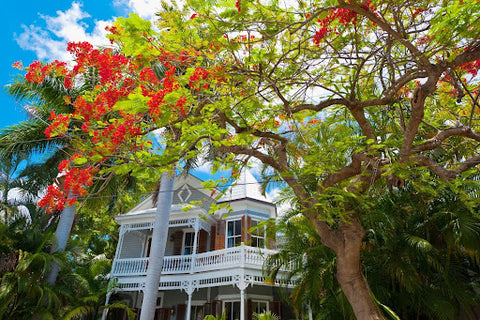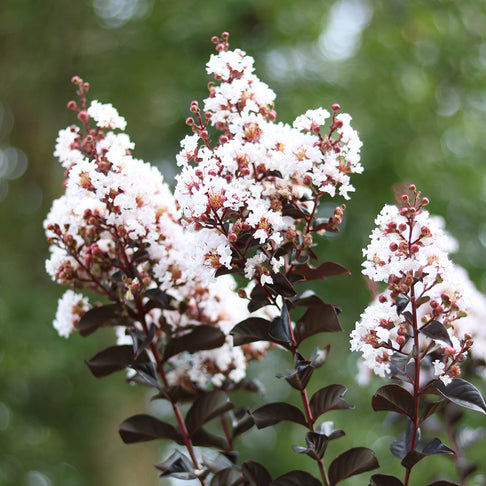Flowering Trees for Florida
Showing 41 - 60 of 110 items
Showing 60 of 110 items
Sunlight: Full-Partial
Growth Rate: Moderate Growing
Starting at $251.95 Starting at $224.95
Sunlight: Full-Partial
Growth Rate: Slow Growing
Starting at $164.95 Starting at $158.95
Sunlight: Full-Partial
Growth Rate: Moderate Growing
Harvest Time: September - October
Starting at $124.95 Starting at $114.95
Sunlight: Part Sun (4 hours minimum) or Full Sun
Growth Rate: Moderate Growing
Starting at $224.95 Starting at $172.95
Sunlight: Full Sun
Growth Rate: Fast Growing
Starting at $90.95
Sunlight: Full Sun
Growth Rate: Moderate Growing
Starting at $76.95
Sunlight: Full Sun
Growth Rate: Moderate Growing
Harvest Time: September - October
Starting at $179.95 Starting at $182.95
Sunlight: Full Sun
Growth Rate: Moderate Growing
Starting at $89.95 Starting at $94.95
Sunlight: Full Sun
Growth Rate: Moderate Growing
Starting at $153.95 Starting at $154.95
Sunlight: Part Sun (4 hours minimum) or Full Sun
Growth Rate: Moderate Growing
Starting at $169.95 Starting at $174.95
Sunlight: Full Sun
Growth Rate: Fast Growing
Starting at $179.95 Starting at $163.95
Sunlight: Full Sun
Growth Rate: Moderate Growing
Starting at $109.95 Starting at $77.95
Sunlight: Full Sun
Growth Rate: Moderate Growing
Starting at $80.95
Sunlight: Full Sun
Growth Rate: Fast Growing
Starting at $99.95
Sunlight: Full-Partial
Growth Rate: Moderate Growing
Starting at $154.95
Sunlight: Full Sun
Growth Rate: Moderate Growing
Starting at $114.95
Sunlight: Full Sun
Growth Rate: Moderate Growing
Starting at $169.95
Sunlight: Full-Partial
Growth Rate: Moderate Growing
Starting at $229.95
Sunlight: Full-Partial
Growth Rate: Fast Growing
Starting at $179.95
Sunlight: Full-Partial
Growth Rate: Moderate Growing
Harvest Time: Fall
Starting at $89.95
Facts About Flowering Trees in Florida
Flowering trees add a pop of color and much-needed shade in Florida. While they might take longer to grow than perennials, flowering trees in Florida add year-round visual interest your neighbors are bound to be jealous of.
Examples of Flowering Trees in Florida
No matter where you live in Florida, whether the Panhandle or the Keys, there’s a flowering tree that’s right for you. Below, we’ve highlighted popular flowering trees in each of Florida’s USDA zones.
Zones 8 and 9

Zones 8 through 9 cover northern Florida and parts of central Florida. Major cities in this range include Tallahassee, Jacksonville, Gainesville, and Ocala.
1. Crape Myrtle (Zones 6-9)
2. Eastern Redbud (Zones 4-9)
3. Fringetree (Zones 3-9)
Zones 9 and 10
In addition to the cities mentioned above, this range includes Orlando, Sarasota, Tampa, Fort Myers, and Palm Beach.
1. Fragrant Tea Olive Tree (Zones 8-11)
2. Southern Magnolia (Zones 7-9)
3. Phoenix One Royal Empress Tree (Zones 7-11)
Zones 10 and 11

Miami’s southernmost areas follow into zone 11, including Miami and the Florida Keys.
1. Plumeria (Zones 10-11)
2. Royal Poinciana Tree (Zones 10-11)
3. Yellow Trumpet Tree (Zones 10-11)
Some flowering plants native to Florida you should also consider are:
1. Firebush (Zones 8-11)
2. Passion Flower (Zones 7-11)
3. Spider Orchid (Zones 9-11)
For Florida flowering trees identification, check out this fantastic fact sheet by the University of Florida.
Benefits of Flowering Trees in Florida
If we haven’t convinced you to plant a flowering tree, we have four benefits that you can’t ignore.
Visual appeal: Flowering trees in Florida add a splash of color in a primarily green environment. You can even plant winter-blooming trees like Flowering Dogwood, Snowdrift Crabapple, or tropical cherry trees.
Delightful fragrances: Yes, flowering trees have gorgeous blooms, but don’t forget the lovely fragrances they can add to your life. Two aromatic flowering trees that will thrive in Florida are Sweet Acacia and Fiddlewood.
Shade: Florida isn’t called the Sunshine State for nothing. Planting a tree brings shade to outdoor space so you can enjoy it on sweltering days and skip the sunburn.
Curb appeal: An aesthetically pleasing flowering tree can make your home stand out to neighbors, and can even add to your home’s value.
How to Grow and Maintain Flowering Trees in Florida
Where to plant: Plenty of flowering trees can thrive in Florida, but before planting, check their “comfort zone.” The Sunshine State spans USDA hardiness zones 8 through 11. Most importantly, select a flowering tree that doesn’t require excessive care to avoid working in the heat.
When to plant: This might surprise you! Fall and winter are the best times to plant flowering trees in Florida. The cooler weather enables the tree to acclimate to its environment and grow a sturdy root system before it produces blooms and flowers.
Soil: The type of soil a tree needs to survive is variety-dependent. To the frustration of many gardeners, Florida’s most prevalent soil type is Myakka, a sandy soil that covers 1.5 million acres. But there are regional differences.
The soil in North and Central Florida is typically very sandy, while the panhandle soil has more clay. Meanwhile, the soil in the Everglades tends to be peat-based and highly fertile. And lastly, soil in the extreme areas of Southern Florida will have a high pH because of limestone.
We recommend adding organic material, such as compost or manure, to almost all Florida soil.
Sunlight: Most flowering trees require full sun to flourish, at least 6 hours daily. However, while all-day sun produces the best growth, some smaller trees do best when they receive shade for part of the day. Always check your tree's growing profile for its light requirements before planting.
Water: Florida trees are thirsty, but some are more thirsty than others (Loblolly Bay). Generally, water a newly planted tree once a day for a week, and then taper off watering. After the first week, water every other day, and then every three days. Eventually, water once a week until the tree is no longer dependent on your water. You can always water trees during unreasonable dry, windy, or warm weather.
Common Question About Flowering Tree Resources Florida
What flowering tree stays in bloom the longest?
A number of today’s flowering tree hybrids are bred to maintain their blooms throughout the spring and summer seasons. Some of our favorite varieties include redwoods, dogwoods, magnolias, and tree hydrangeas.
What is the most popular flowering tree?
With more choice than ever available to home gardeners, it’s tough to narrow down the most popular flowering tree! However, crape myrtles always top the list for flowering trees for its multi-trunk beauty and easy-to-care-for qualities.
What is the least messy flowering tree?
While most all flowering trees are deciduous, there are some that are less messy than others. Flowering dogwoods provide year-round interest with their springtime flowers and fall berries—and because the berries are so loved by birds, they don’t make too much of a mess!
More Flowering Tree Resources
1. Pruning Crape Myrtles: How to Keep Your Crape Healthy
2. Seasonal Guides: Flowering Trees




















